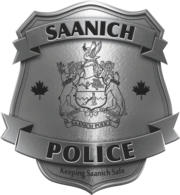The following article has been provided by Colleen Woodger, the ICBC Road Safety Coordinator for South Vancouver Island.
Slow down and plan ahead for road trips
With summer just around the corner, many of us are planning on packing up the car to head out on road trips. While it’s exciting to get away with family and friends, plan ahead for increased traffic volumes so you’re not tempted to rush to your destination.
Nobody likes getting stuck in heavy traffic, but don’t make decisions that increase your risk of causing a crash. Tailgating, failing to yield or speeding may seem harmless but these high-risk driving behaviours contribute to almost half of all police-reported casualty crashes in B.C. On average, 77,000 people are injured in crashes in B.C. each year.*
So whether you’re on a highway or driving through a small town, keep these tips in mind to make your journey safe and less stressful.
· Slow down and be more realistic about travel times to reduce your risk of getting in a crash. Give yourself extra time to get to your destination so you don’t feel the need to rush.
· Always leave a safe following distance between your vehicle and the vehicle in front so you have enough time to react to the unexpected. You need a following distance of at least two seconds in good weather and road conditions. Allow at least three seconds when you’re behind a large vehicle that could block your vision, or a motorcycle that could stop very quickly.
· If you’re planning to pass, make sure you do it safely and legally. Keep within the speed limit and communicate clearly by using your signals. Avoid passing on the right, and ensure you can see the vehicle you’ve passed in your mirrors before pulling back in front of it. Big trucks can’t slow down as quickly as you can so leave extra room before pulling back in.
· On an average day, there are 233 crashes at intersections in B.C. It may not always be easy to decide who has the right-of-way at intersections but signs and traffic signals often help determine who needs to yield to whom. If in doubt, always be ready to give the right-of-way.
- If you’re approaching a light that’s been green for a while, slow down and prepare to stop in case the light changes. Remember that yellow lights mean you must stop unless it’s unsafe to do so.
To learn more about the rules of the road, check out ICBC’s Learn to Drive Smart guide at www.icbc.com/driver-licensing/getting-licensed/pass-veh/roadsense-drivers.
As the weather gets warmer, expect to share the roads with more motorcyclists, cyclists and pedestrians. An average of 150 cyclists are injured every month from May to October in B.C.* so keep these additional driving tips in mind:
- Motorcycles: Scan at intersections and look carefully for motorcycles, especially when you’re turning left. Motorcycles can be hard to see, particularly at night, in bad weather or in heavy traffic. It is also difficult to judge how fast they’re travelling. If you see a motorcycle approaching, the safest thing to do is yield the right of way. Always look for motorcycles before changing lanes.
· Pedestrians: Pedestrians are among the most vulnerable of all road users, and can be unpredictable. Be extra careful at night and in poor weather when pedestrians are more difficult to see. Scan crosswalks and intersections for pedestrians, especially when turning, and don’t pass a vehicle that has stopped at a crosswalk — it’s illegal and unsafe.
· Cyclists: Make sure you shoulder check for cyclists before turning right or pulling away from a curb and watch for oncoming cyclists before turning left. Give cyclists at least one metre of space when passing them. Pay extra attention at night — some cyclists may not have lights or reflective gear.
Enjoy your summer with family and friends and remember to plan ahead and slow down.
For more information on road safety visit: www.icbc.com/road-safety/safer-drivers
*Statistics are based on 2008-2012 ICBC data and 2007-2011 Police data.
